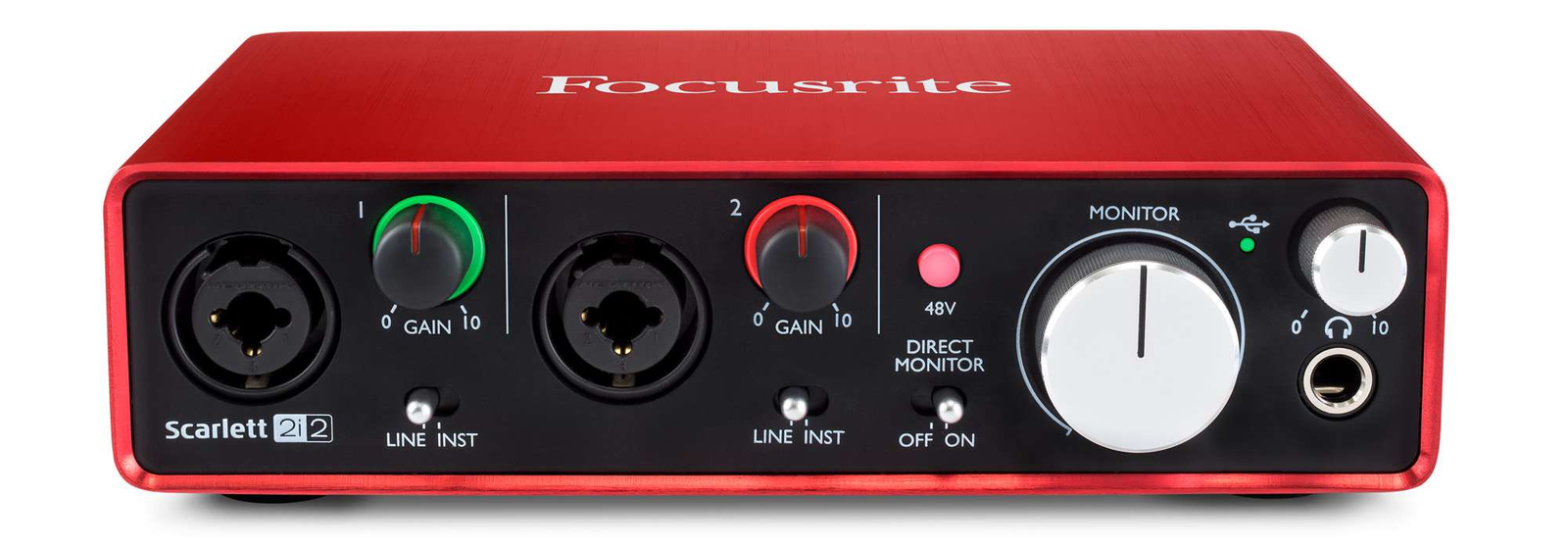There is no doubt, the world of audio production can be a confusing place for the budding recording artist. If you don’t know the benefits of an audio interface that uses Thunderbolt technology, compared to one using USB, then why bother upgrading, right? Well, let me try and clear some of it up, then you can decide if it’s worth it for your particular situation.
Getting Technical
The differences between a USB and Thunderbolt interfaces are purely technical. Fundamentally, the functions of both mediums are exactly the same; the difference comes in the speed in which its work is done. This is known as ‘latency’. Latency is essentially how fast the audio interface can send your input signal (let’s use a guitar signal as an example) through the interface’s built-in pre-amp, A/D converter etc. and out to your computer and back again to your speakers/headphones. The faster the interface can do this, the less latency you’ll get from the moment you strike the note on your guitar to it sounding out of your speakers. In an ideal world, this would be 0.00ms (i.e. no latency at all) but inevitably, the original signal needs to be processed first, both in the audio interface and in the computer, and this takes time.
So let’s take two practical examples from one of the worlds leading audio interface manufacturers – Focusrite. We’ve got a USB-powered Focusrite 2i2 2nd generation (pictured first) and the Thunderbolt-powered Focusrite Clarett 2Pre (pictured second).
From the get-go, visually, there’s not much between them – you’ve got the same inputs and general layout, but it’s all about what’s under the hood. Let’s take a look at the numbers –
USB Focusrite Scarlett 2i2 (2nd Generation) @ 96kHz/32-bit on Logic Pro X with a Mac Pro running OS 10.11
Round trip latency: 2.74ms
Thunderbolt Focusrite Clarett 2Pre @ 96kHz/32-bit on Logic Pro X with a Mac Pro running OS 10.11
Round trip latency: 1.67ms
The Speed of Sound and The Future of Recording
So with Thunderbolt you’re talking about a speed difference that’s almost double that of it’s USB equivalent. This extra speed gives you room to track your recording live with software plug-ins (compressors, EQ, effects etc.) with more accuracy. But it’s not just the audio interface that effects this speed, it’s also the computer you’re using as this is hosting the software you use to record to. So if you’re using an old PC or Mac, it might be time to upgrade if you’re having latency issues.
In terms of data speed, Thunderbolt is one of the fastest platforms available and is on the path to be the future of data transfer, overtaking USB 3.0 (see above). It’s already the gold standard of home and pro recording alike and put simply, investing in a Thunderbolt audio interface is about as future-proof as it can get.









